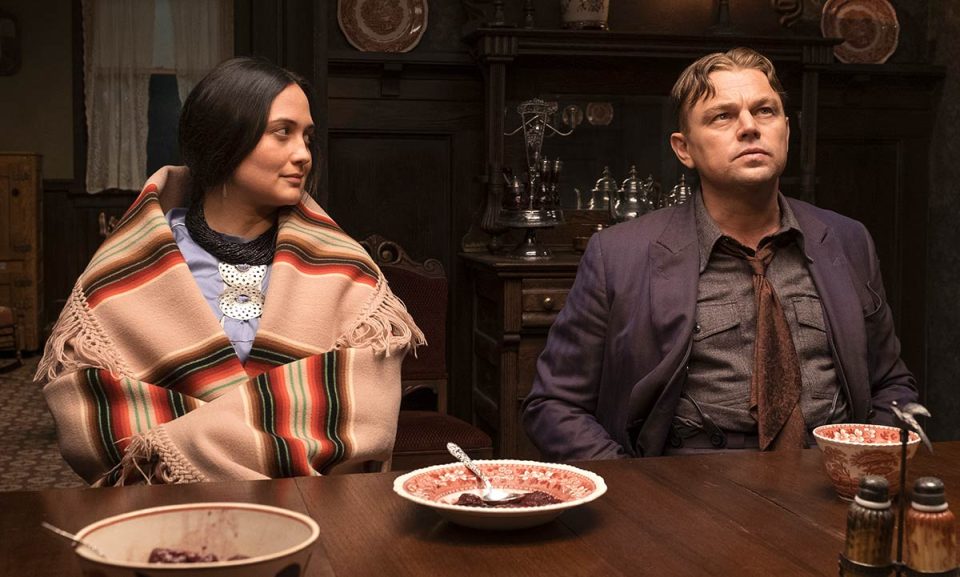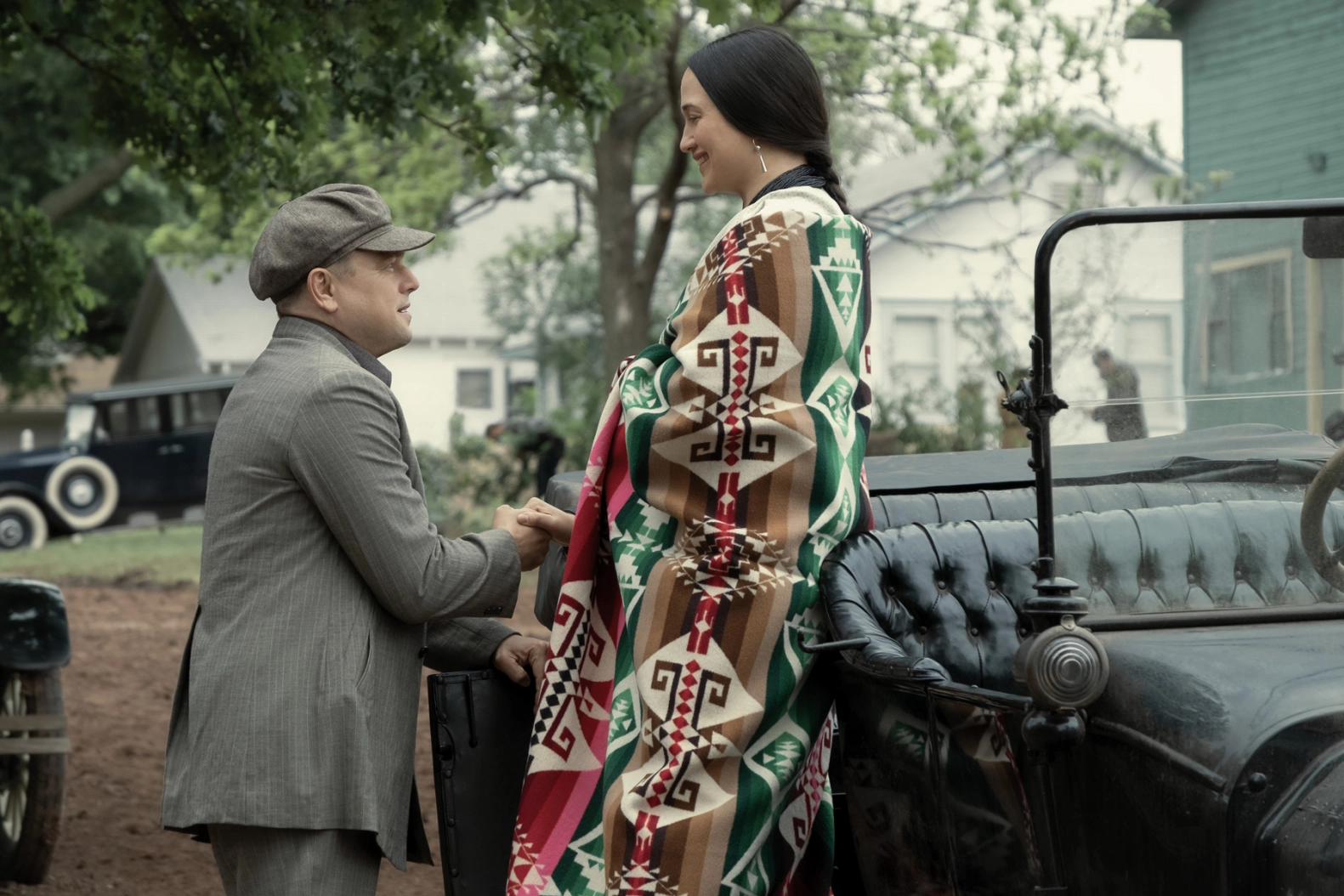
Killers of the Flower Moon: Martin Scorsese’s intimate tale of racial reckoning in America

It’s hard to overstate the phenomenon but if there is consensus over which film the Cannes film festival was collectively abuzz about, there is perhaps only one answer: Martin Scorsese’s Killers of the Flower Moon. Though Scorsese has had a close relationship with the festival — in a career spanning half a century, sixty years almost — it began with his Mean Streets in the Directors Fortnight section in 1974.
His Taxi Driver won the Palme d’Or in 1976 even though it wasn’t a case of universal acclaim and provoked wildly differing reactions. Times have changed since then, and Scorsese is considered one of Hollywood’s pioneering auteurs whose films draw breathless crowds though he hasn’t been spotted at Cannes since his premiere of After Hours in 1986 in the official selection. This year, for the 76th edition of the Cannes Film Festival, Scorsese brought a 206-minute magnum opus to be screened in the Out Of Competition section of the festival.
A tale of trust and betrayal
The film is adapted from the bestseller Killers of the Flower Moon: The Osage Murders and the Birth of the FBI (2017) by New Yorker journalist David Grann. In his book, Grann revisits the murders of indigenous people in the Osage Indian nation in Oklahoma in the 1920s. After the discovery of oil on their land, the Osage indigenous people became one of the richest in America. Close on the heels of their newfound wealth, they started to mysteriously die.
Also read: How Martin Scorsese’s films record modern American cinema’s savage beauty
With more than two dozen unsolved murders on their hands, the FBI in its nascent stages, takes up the case and discovers a sinister plot about the killings. The Indians were being targeted for their newfound wealth by white Americans in a shocking case of crime, revealing deeply embedded racial injustices combined with greed. At the heart of the story is Mollie Burkhart, many of whose family members became victims of the killings either by being poisoned or at gunpoint.
A riveting page-turner of a book, Grann’s narrative nonfiction had topped numerous bestseller lists and was shortlisted for National Book Award when it came out in 2017. Naturally, it set off bidding wars and the movie rights were acquired in a five-million-dollar deal by Imperative Entertainment. Scorsese came on board and when the script was ready, the team found it to be lacking.
In his 80s and with unfailingly sharp wit, Scorsese faced the press on the sidelines of the festival. While the original plan was to make the FBI investigations over the killings the focus of the movie, Scorsese realized it felt like just another cop drama and does no justice to the racial politics that forms the backbone of the book.

“It’s not a whodunnit, it’s a who-didn’t-do-it,” he says. “After two years of working on the script, at one point, Leo came to me and asked me where the heart of the story is.” To that effect, Scorsese met with the Osage county leaders to understand the story from their perspective. It’s when he realized that “the story is in the character on whom the least is written about — Ernest. Let’s try to find who Ernest is and create him as a template for the tragedy of trust and betrayal of the indigenous people.”
Love and sinister motives
In that sense, the film deviates from the book by narrowing in on Ernest, a complex character of a white man who falls in love with the beautiful and rich indigenous woman Mollie. But is his love real or is he part of the get-rich scheme being followed by so many of white Americans of the period who marry Osage women for their money? Thus, the film prods his marriage to Mollie and makes it the centerpiece of the narrative and poses the question whether the whole union might have sinister motives.
Also read: ‘Satyajit Ray’s filmmaking took my breath away’: Martin Scorsese
“He is able to expose the humanity of even some of the most twisted characters ever imagined,” says Leonardo Di Caprio, who plays Ernest. Di Caprio was billed to play the detective Tom White earlier, a role that went to Jesse Plemons. “It’s really a throwback to the great epic films of the 1940s and had at its center this very bizarre love story that we really worked very hard on,” he adds.
Insofar as outreach is concerned, Grann’s unputdownable bestseller topped reading lists when it was released. Yet widespread attention has somehow eluded these historical injustices with almost no reckoning in contemporary American society.
This has plagued indigenous actor Lily Gladstone’s conscience, too. “We are storytellers and artists. By focusing on these conflicted characters, we are challenging white supremacy and people’s complicity. Turning the golden lens on these issues we are asking, why the hell does the world not know about these things? Our communities always have, it’s so central to everything about how we understand our place in the world,” Gladstone, who plays Mollie in the film, says.
Sparks Oscar chatter
Scorsese and team shot in Osage county and included as many extras and talents from the indigenous population, some of whom are behind the camera as assistants. But perhaps nobody stole the show as much as Lily Gladstone did in the film. Particularly noteworthy post-screening chatter about the film was dominated by Gladstone’s quietly authoritative screen presence and luminous performance.
Also read: Harry Potter, 15 years on: From frenzied anticipation to franchise fatigue
Despite the grumbling about its length and its breathtaking scope, Killers of the Flower Moon received instant acclaim and standing ovations, lasting several minutes on its screening night at Cannes. At this point of time, the film has only been viewed by accredited press and other professionals at the festival, alongside invitees for the special premiere. Long queues snaking outside the festival palais unmindful of the unpredictable rainy weather spoke of the buzz surrounding the film’s release.
Heavy Oscar chatter is quick to follow the film as it is being released in the US and worldwide later in October, coinciding with the Academy Awards nomination season, before retiring to Apple TV+. Hollywood’s social currency and influence to bring to light untold stories is undeniable. Killers of the Flower Moon, when it releases in October, will hopefully achieve that.


